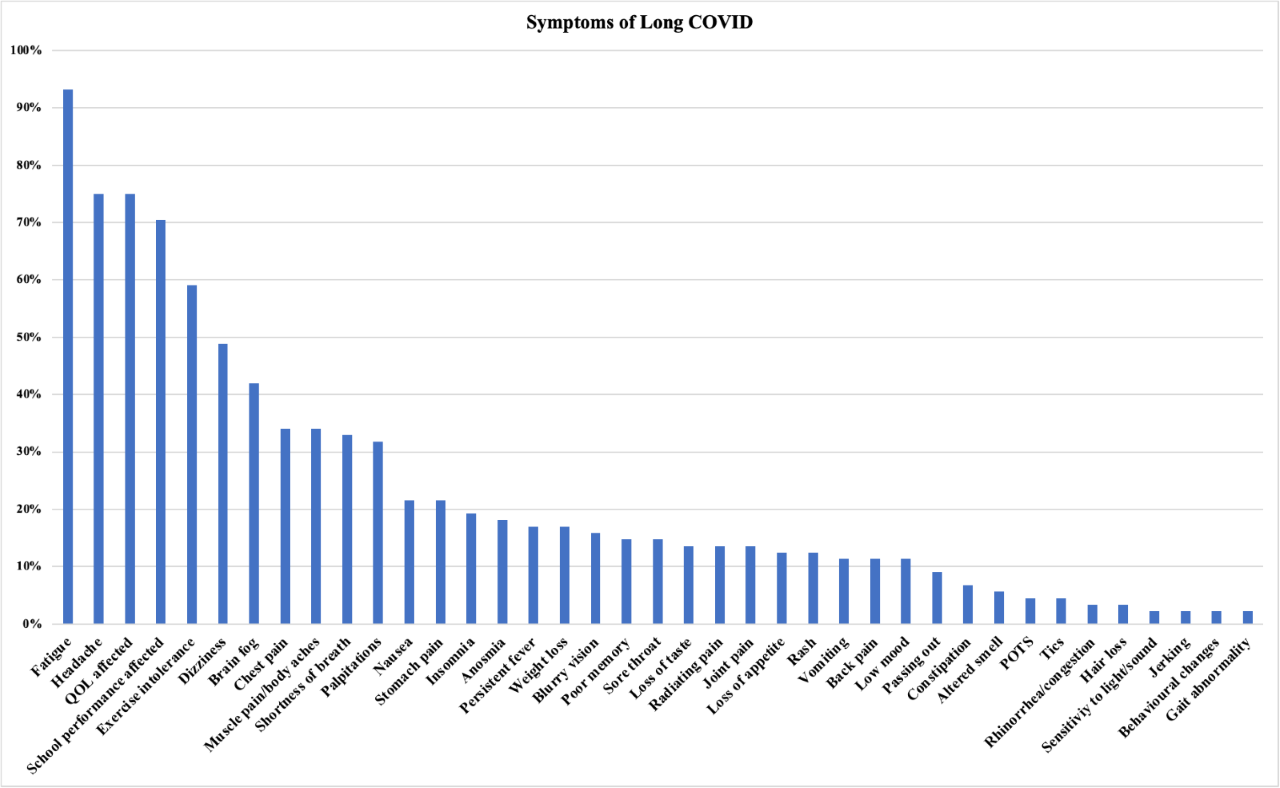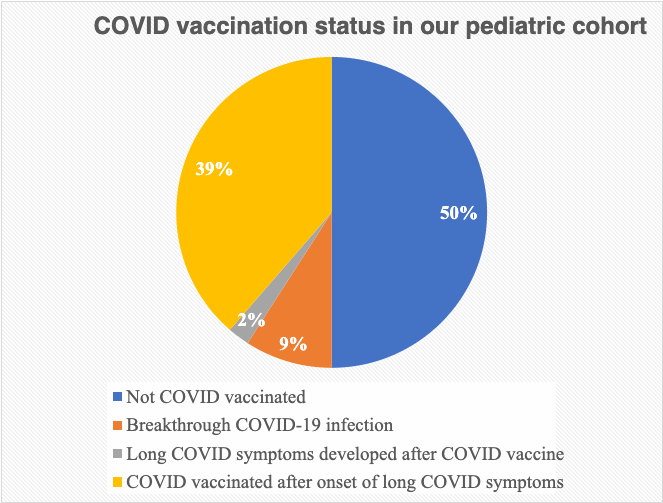Infectious Diseases
Infectious Diseases 1
614 - Epidemiology and Clinical Spectrum of Pediatric Long COVID in a Dedicated Pediatric COVID Recovery Clinic.
Saturday, April 29, 2023
3:30 PM - 6:00 PM ET
Poster Number: 614
Publication Number: 614.225
Publication Number: 614.225
Dina Kamel, CHLA, Covina, CA, United States; Jeffrey Bender, Keck School of Medicine of the University of Southern California, Los Angeles, CA, United States; David Warburton, Keck School of Medicine of the University of Southern California, Los Angeles, CA, United States; Sindhu Mohandas, Children's Hospital Los Angeles, Los Angeles, CA, United States

Dina Kamel, MD (she/her/hers)
Infectious diseases fellow
CHLA
Covina, California, United States
Presenting Author(s)
Background: Long COVID presents with a wide range of ongoing, new, or returning symptoms in patients who have had COVID-19 infection. Global reports demonstrate that these symptoms can last from weeks to months, significantly impacting patients’ quality of life. There is no test to diagnose long COVID making it difficult for healthcare providers to accurately diagnose. To date, most studies address adults with long COVID. Little is known about the condition in children.
Objective: To understand the characteristics of long COVID in children and to describe the most common presenting symptoms in pediatric patients. Our secondary objectives included investigating the duration and severity of symptoms in correlation to the acute COVID-19 infection and study the influence of vaccines on the course of long COVID.
Design/Methods: In order to accomplish these objectives, we performed a retrospective analysis of all children seen in the COVID Recovery Clinic at Children’s Hospital of Los Angeles from August 2021 to December 2022. Data were abstracted using a standardized tool and analyzed using SPSS 28.
Results: Overall, 88 patients were identified with long COVID. Of these, 43 (48.9%) were females with a median age of 14.2 years (IQR 11.4-15.6). Data regarding race and ethnicity were limited. The most reported symptoms were fatigue (93.2%), headache (75%), exercise intolerance (59.1%), dizziness (48.9%), brain fog (42%), chest pain (34.1%), shortness of breath (33%) and palpitations (31.8%). 75% of the patients reported that their quality of life was affected and 70.5% of them reported a decline in school performance. Symptoms developed immediately after COVID infection in 48 (54.5%) of patients. Among the remaining 40 children, symptoms developed after 4 weeks (IQR 2-6.3). 34(38.6%) patients received the COVID-19 vaccine after the onset of long COVID symptoms, leading to symptomatic improvement in 15 (44%) of them.
Conclusion(s): Long COVID is a growing and poorly understood problem in children after COVID-19 infection. In our large cohort of pediatric patients, we identified fatigue and headache as the predominant presenting symptoms. A better understanding of the clinical spectrum and impact of long COVID on children will help guide future interventions to prevent and treat this debilitating condition.


